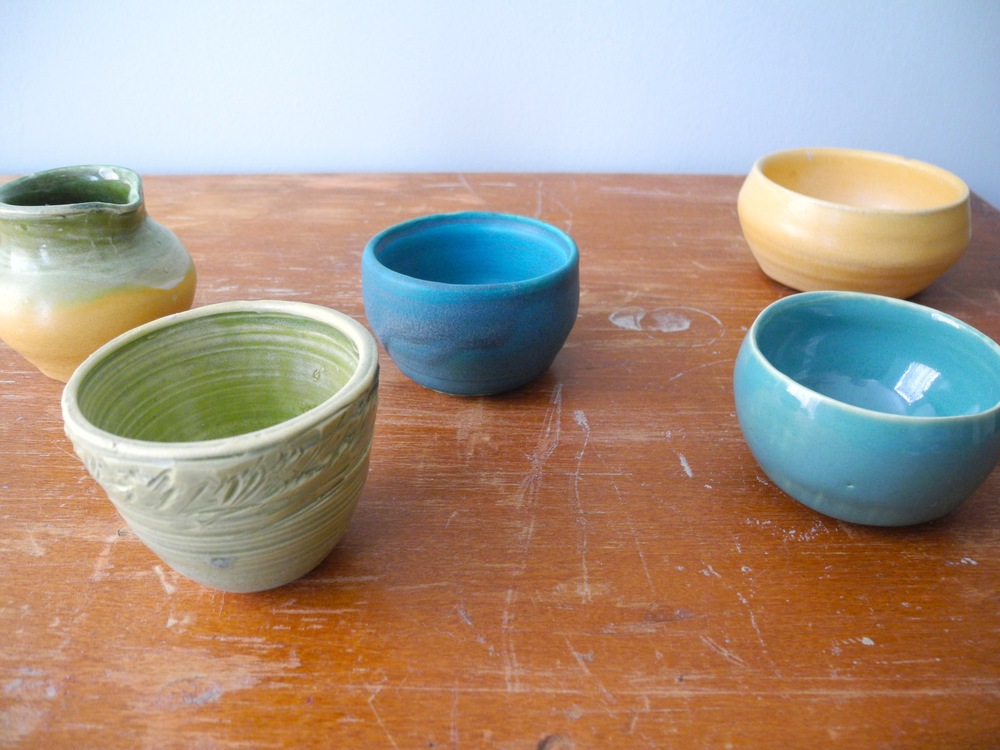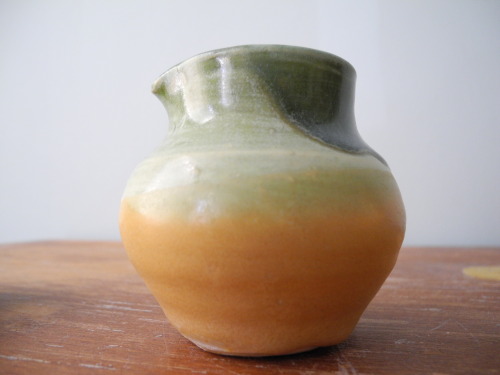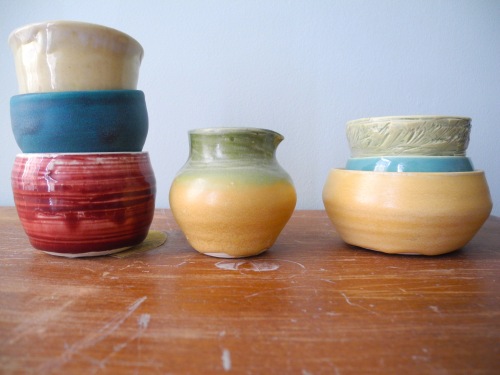About two months ago, I left the safety of my orderly desk and ventured into a cermics studio for the first time, determined to learn the craft of turning clay into tableware. It's an art form that I have long admired, but the opportunity to learn how to do it never presented itself...that is, until I started working on Simon Leach's Pottery Handbook (a comprehensive guide for making wheel-thrown pottery, which we're editing now and planning to publish in Spring 2013). Now that I've completed my beginner's course, I can attest to the fact that a lot happens to clay on its way to becoming a pot: After its first spin around the wheel, the pot is deemed a "keeper" or a "do-over." If it's a keeper, then you set the pot under plastic for a few days or a week until it has firmed up and dried out a bit, at which point you put it back on the wheel and trim away excess clay, carving the bottom into a delightful shape. The pot is then bisque-fired in a kiln (which is sort of like prebaking a dough), and then it gets dipped in glaze and fired at super-high heat in a kiln, and this is where the glaze turns to glass, coating your creations in the most fascinating ways.
See how much I've learned?
I must be honest--I didn't know how much I would love seeing the finished product. As you may recall from my first post, as a beginner I was happy just to see the wet clay become a somewhat symmetrical shape. But the first time I saw my clunky little freshly glazed pots, I breathed out a sigh of wonder. Oh, would you look at that glossy finish!, I thought, when I first saw the little blue bowl above. Or, when looking at the bowl below: How fascinating that the turquoise came out so matte, with so much gray and deep navy blue...
My proudest achievement (so far, anyway) has been the little creamer below. When I first threw this pot, I had in mind that it would be a little bud vase, but then I looked at its rim and thought, if I squeezed the clay just so, I could create a spout. (For the record, the act of creating that spout required a fair bit of courage since it was a nice bud vase as it was, and some things really are better left alone.) But now that it's glazed, I can't imagine it any other way.
Admittedly, I seem to have a fetish for finger bowls, and my favored palette appears to be distinctly Mediterranean. I supposed it's a good thing I love olives and roasted almonds, since it looks like I'll be serving a lot of these at my house! And yes, it's true that almost every one of my pots is wonky, but that doesn't bother me too much. In fact, I now look at the ceramics sections in stores and cannot believe that there are potters out there who can throw tableware so consistently. Someday, I think, if I keep practicing, I might be able to do the same. But for now, I'm thrilled that I have challenged myself to learn something new, and I have the good fortune of being taught by and working with some of the best potters in the world as we develop what will truly be an amazing pottery book. And finally, I hope that this post inspires you to try your hand at something new--until you try, you'll never know what exciting, wonderful, and wonky creations will spring forth from your own two hands. What is it that you have always wanted to learn? Please share in the comments section below!





